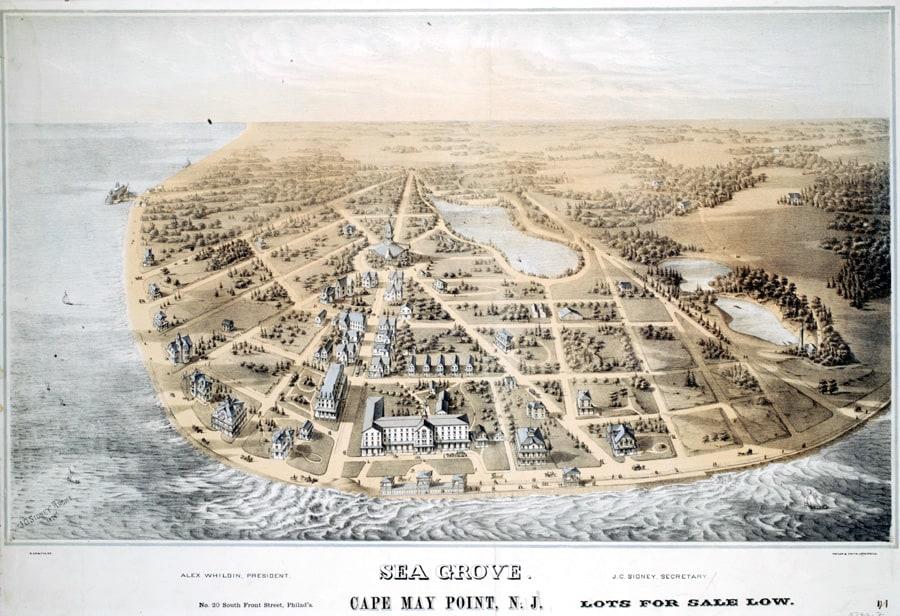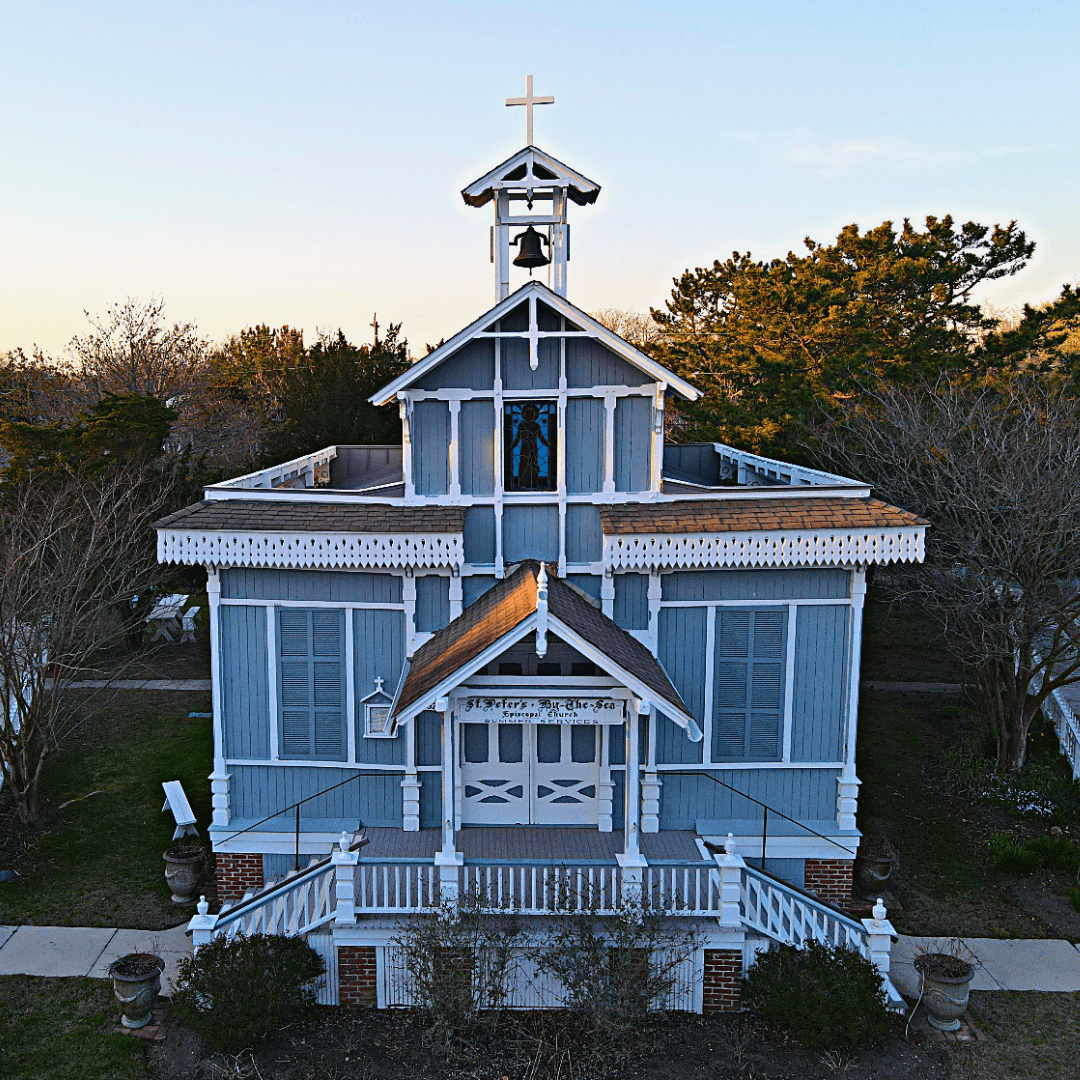The Philly Church That Moved To Cape May
[Watch the video at the bottom of the article for photos and more details]
St. Peter’s by the Sea may look like an ordinary church but in reality, it has an extraordinary story.
It wasn’t constructed here in Cape May Point, it once stood somewhere hundreds of miles away and was taken apart piece by piece and rebuilt here.
Let’s talk about where it came from and why it was moved.
Located at 102 Lake Drive in Cape May Point, this little church has been an icon of the Point since the Point was created.
Let’s start back in 1875 when Philadelphia cotton merchant and devoted Presbyterian, Alexander Whilldin teamed up with Philadelphian John Wanamaker to build a religious community.
Whilldin, who owned over 300 acres in the area then called Stites Beach, put 266 acres of property aside to build this town.
Together they founded the Sea Grove Association which would build a “religious seaside home for the Glory of God and the welfare of man.”

The Philly Church That Moved To Cape May
They built the roads, infrastructure, hotels like The Sea Grove House, and churches but the main feature was its massive pavilion. It was 100 feet in diameter, built in the Rustic style. This was located in the now circle in the middle of the town.
By 1879 the association fell into bankruptcy and parts of the town were sold off for parts. The pavilion was sold and torn down and its wood was reused for houses in the area.
After the Sea Grove Association went under it was rebranded as Cape May Point.
It was around this time when one of the churches down there, the Episcopal church, was looking for a more permanent home to do their services in.
For the year prior they were meeting in the parlor of the Cape House for their services.
During the summer of 1879, a “fine yellow pine frame” building that was built for the Centennial International Exhibition was up for sale. This building was used as the “kindergarten cottage.”
They had built it to teach the Frobel kindergarten learning model which consisted of creative play, singing and dancing, and nurturing plants. At the expo, there would have been a fence around the building with a children’s garden.

The Philly Church That Moved To Cape May
More than 200 buildings were constructed for the grounds and over the course of three years the city was selling off these buildings to make some money back.
That winter Rev. W.R. Stockton purchased the building and took it apart so that it could be loaded on a train and brought down to Cape May Point.
Stockton secured land from the Sea Grove Association and once the pieces were delivered they rebuilt it and dedicated it as St. Peter by the Sea. Unofficially it became known as the Gingerbread Church
Over time due to erosion, the church had been moved 4 times and in 1995 it was added to the NationalRegister of Historic Places.
Check out the video below for more details.
Check out these other Videos and Articles
